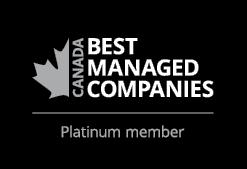On March 1, 2023, I spoke at the HRD Wellbeing Summit Canada, which brought together leaders nationwide to discuss health challenges in today’s workforce, share ideas, and create solutions. The achievement of employee resilience takes more than a specific program or work perk. A holistic well-being strategy supports employee resilience and adaptability to change and helps them to overcome obstacles and remain positive in adversity. The goal for employers should be to provide employees with a supportive environment where they have access to health resources. It’s about creating a culture focused on improving employee health and happiness.
The importance of an employee well-being strategy
For many people, the stress from COVID has now been replaced by burnout and economic exhaustion due to high-interest rates, inflation, and fear of recession/downturn. In addition, delayed testing and treatment have had widespread impacts on the physical health of employees. Now, more than ever, employers must look for ways to support employee well-being beyond lunch and learns and fitness centre subsidies.
Creating a holistic well-being strategy means understanding and finding ways to help support employees in all aspects of life, including physical, mental, emotional, social, financial, and work. Healthy employees who feel supported and connected to work are happier, more engaged, and more productive.
Build a healthier workplace.
How can I create a holistic well-being strategy?
Creating a well-being culture starts at the top. The C-suite must prioritize employee health, allocate resources and budget, and weave wellness into the company’s DNA. Business practices, policies, corporate communications, benefit programs and even physical workspaces should always be reviewed through a lens of employee health. Here are some tips for getting started:
- Make employee health a metric on your corporate scorecard. Results from employee engagement surveys each quarter can gauge employee workplace satisfaction and sense of belonging. Utilization and trend data from your Employee and Family Assistance Program (EFAP) and group benefits program (drug, paramedical, disability) can provide insights into employees’ health, including incidences of chronic conditions like mental illness, diabetes, and cardiovascular disease. You can also measure results from customer satisfaction surveys.
- Empathetic leaders can help employees feel connected. The 2021 McKinsey & Company review of their Great Attrition Survey found that 51% left their jobs because of a lack of connection with their workplace and manager.1 In addition, a new study by The Workforce Institute at UKG found that 69% of people stated their managers had a greater impact on their mental health than their doctor (51%) or therapist (41%) and were on par with their partner.2 To retain talent and improve employee engagement, leaders should try to connect with employees on a deeper level, demonstrating empathy and vulnerability. Being present, participating in meetings and on camera in a hybrid environment, and taking the time to walk around the office and connect with employees can help build those connections.
- Ask employees what they need. It is essential to understand what employees want and need concerning their well-being. This starts by asking employees directly. Too many companies launch programs without surveying employees to determine what they truly want or need.
- Offer choice and flexibility. If employers require employees in the office full-time (e.g., retail, health care, manufacturing), consider providing some choice and autonomy regarding scheduling, which projects or lines employees work on, etc. If embracing a hybrid work arrangement, allow employees the option to attend at the office rather than make it mandatory. If you need employees who typically work from home in the office, ensure there is a purpose, such as a special guest speaker, a training event, or a project kick-off. Or consider perks such as onsite massage therapy, wellness events, or lunch – make it fun!
- Communicate health and well-being information appropriately. Create a unique name and brand for your well-being program and ensure it’s included in all communication. You can also conduct an inventory and create a summary of existing offerings that employees may not remember are available, including paramedical benefits that cover mental health and nutritional coaching or treatments that assist employees struggling with obesity or fertility. Financial health is part of overall health and well-being, so be sure to include your employee savings programs in your branding and communication plans. Make it easy for employees to find support by utilizing a central hub to house information. This could be the company intranet or a digital well-being app. When communicating well-being initiatives and programming, ensure you use multiple communication channels beyond email, including employee town halls, one-on-one meetings, team meetings, and posters.
- Timely recognition and rewards. Recognize employees promptly instead of monthly or quarterly. You can also have a program encouraging people to recognize their co-workers, such as a postcard program or social program like Sprout or Virgin Pulse.
Richard Branson once said, “Clients do not come first. Employees come first. If you take care of your employees, they will take care of your business”. Building a resilient and engaged workforce depends on how you treat and care for your employees.
Please reach out to a Cowan consultant to learn more about integrated and proactive solutions for your employees’ physical and mental health.
Sources
- De Smet, A., Dowling, B., Mugayar-Baldocch, M., Schaninger, B. (September 8, 2021). ‘Great Attrition’ or ‘Great Attraction’? The choice is yours. Retrieved from URL. ↵
- Tilo, D. (January 25, 2023). 2 in 5 workers say job ‘biggest factor influencing mental health.’ Retrieved from URL. ↵






